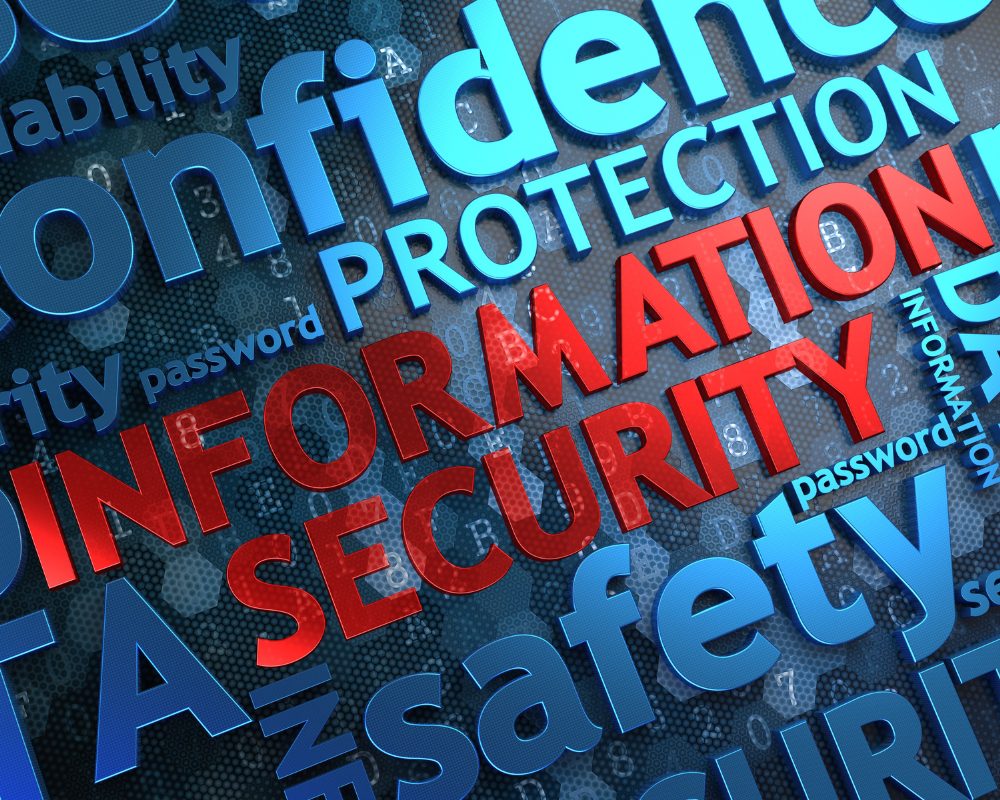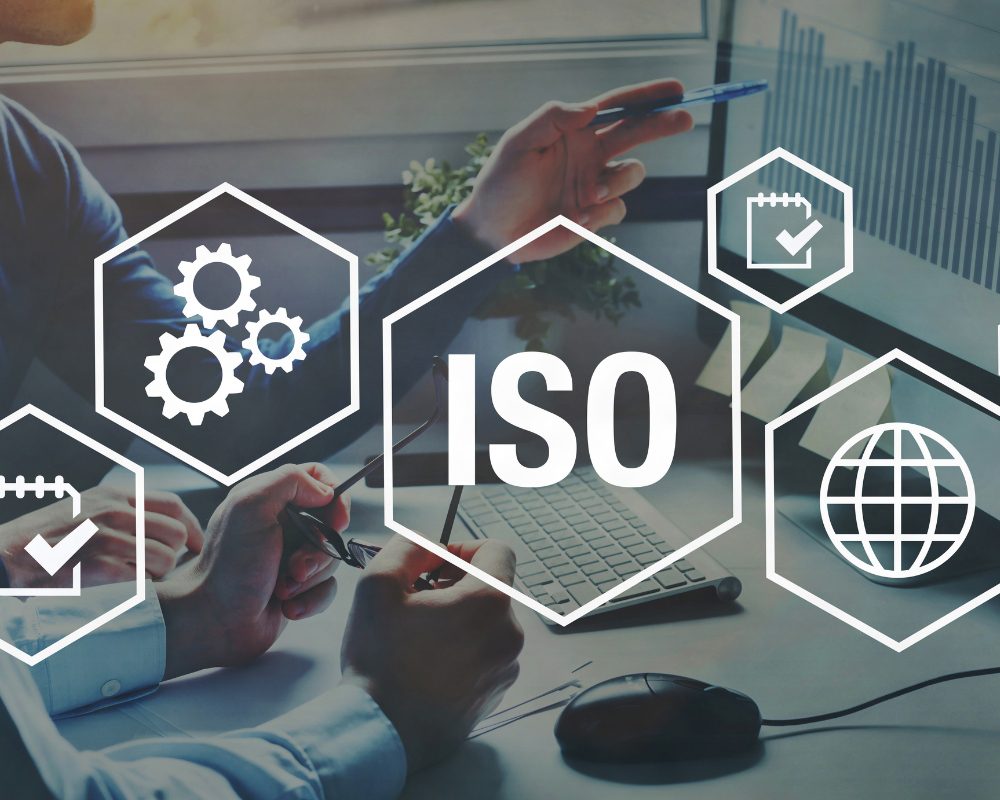Guard Your Business Assets with Australia’s ISO 27001 Information Security Standards
ISO 27001 Standard Australia is a globally recognised framework for managing information security. It provides organisations with the policies and procedures needed to ensure their data is secure, as well as helps them demonstrate compliance with legal requirements.
Established by the International Organization for Standardization (ISO), this standard provides an effective approach to identifying, managing, and protecting sensitive information through a comprehensive risk management program.
The ISO 27001 standard in Australia has been designed to provide assurance that businesses are taking appropriate measures to protect their customers’ personal information from unauthorised access or use. The standard also helps organisations identify potential threats, reduce risks, and ensure they have adequate controls in place to prevent data breaches.
Additionally, it enables organisations to develop and maintain an information security system that meets industry-recognized standards of performance and effectiveness.
Organisations that adopt the ISO 27001 standard will benefit from improved customer confidence, increased operational efficiency, reduced costs associated with mitigating cyber threats, and improved overall business continuity planning. This article aims to provide readers with an overview of the key elements of the ISO 27001 Standard in Australia and how it can help organisations manage their information security effectively.
Overview Of Iso 27001
ISO 27001 is an international standard for information security management developed by the International Organization for Standardization (ISO). It has been adopted in Australia as a national standard and provides organizations with an implementation guide to protect their data from unauthorized access, disclosure, destruction or alteration.
The ISO 27001 standard outlines requirements that must be met when implementing a comprehensive information security system within an organization.
The Australian Standards version of ISO 27001 includes specific guidance on developing policies, processes and procedures related to risk assessment, risk treatment plans, monitoring and review of compliance measures. Additionally, it covers areas such as physical security controls, employee awareness training and certification schemes. The aim of these components is to ensure companies have effective systems in place to identify potential risks associated with the use of technology and that data protection measures are implemented accordingly.
Overall, ISO 27001 is designed to help organizations establish sound practices for managing information security operations while maintaining strong levels of data protection. Through its detailed approach to identifying threats and vulnerabilities, organisations can confidently implement necessary controls to ensure they remain compliant with relevant regulations while protecting their assets from malicious activities online.
Benefits Of Certification
ISO 27001 certification provides organizations with many advantages, including improved security and compliance. Through this internationally-recognized standard, businesses can demonstrate their commitment to information security management in accordance with the ISO/IEC 17799:2005 Code of Practice for Information Security Management. The following are some key benefits of obtaining an ISO 27001 certification in Australia:
- Improved Organizational Structure – Achieving a certified status requires organizations to assess all areas where sensitive data is stored and managed, which helps create an effective infrastructure that meets customer needs while maintaining high standards of security.
- Enhanced trustworthiness – Organizations that follow the best practices outlined by ISO 27001 will be able to earn increased trust from customers as they have demonstrated their commitment to protecting customer data. This can lead to more business opportunities and greater business growth.
- Cost Savings – By implementing strong measures for safeguarding customer data, such as encrypting communications or using identity access management tools, companies may save money on liability insurance premiums due to reduced risk of breach incidents.
These are just a few of the many benefits associated with becoming ISO 27001 compliant in Australia. Obtaining certification offers peace of mind knowing that one’s organization has met international guidelines for secure data handling, helping ensure its continued success into the future.
Compliance Requirements
The ISO 27001 Standard for Australia provides a comprehensive approach to establishing and maintaining an effective security management system. Compliance requirements are essential for ensuring the implementation of secure systems and processes. These include identifying assets, implementing controls, monitoring performance, developing documented procedures, assessing compliance with relevant legislation and guidelines, evaluating risk assessments and conducting internal audits.
It is also necessary to ensure that all personnel involved in security activities understand their roles and responsibilities within the framework. This includes understanding how to implement policies and procedures as well as responding appropriately to incidents or breaches.
Additionally, it is important to establish regular reviews of the organisation’s security posture, which should take into account any external changes, such as new threats or technology updates. To achieve this level of control, organisations must have appropriate resources available, including staff training and support from qualified technical experts.
Organisations must remain vigilant in order to maintain compliance with the ISO 27001 standard while staying ahead of evolving risks posed by today’s environment. It is, therefore, critical that they assess existing processes on an ongoing basis in order to identify areas where improvements can be made in order to better protect themselves against potential threats or vulnerabilities.
The ultimate goal is to ensure that the security posture remains up-to-date both internally and externally so that any identified risks can be managed effectively before they become a problem.
The Certification Process In Australia
Once the organization has satisfied all compliance requirements outlined in the ISO 27001 Standard, it can pursue certification. The certification process is an essential element of implementing a successful information security management system (ISMS) and must adhere to Australian standards.
In Australia, the audit requirements mandated by ISO 27001 are overseen by qualified auditors who have been accredited by the Joint Accreditation System of Australia and New Zealand (JAS-ANZ).
The audit process involves assessing whether or not the organization meets all necessary criteria as defined by the standard and validating that it conforms to established policies and procedures.
If these conditions are met, then a certificate will be issued outlining that their ISMS satisfies the ISO 27001 standard for information security management systems.
This demonstrates that their internal processes meet industry best practices and provide assurance to stakeholders such as customers, investors, employees, and suppliers. Ultimately, this helps organizations protect customer data from malicious cyber threats while complying with applicable laws and regulations in Australia.
Cost Analysis
When it comes to any business, understanding the cost structure of implementing an ISO 27001 standard in Australia is essential. This means that both cost-benefit analysis and price comparison are necessary for allocating budgets appropriately.
| Cost Factor | Price Range | Variance Analysis |
|---|---|---|
| Personnel Costs | High/Low | Staff size & expertise level; Time spent on training & implementation process; Changes in IT infrastructure requirements; Labour costs associated with development & maintenance processes; Use of external consultants or certifying bodies. |
| Administrative Costs | Medium/High | Licensing fees; Auditing expenses; Network security devices installation & maintenance costs; Paperwork related expenditures (e.g. legal documents); Marketing campaigns regarding compliance announcement to stakeholders. |
| Infrastructure Costs | Low/Medium | Software upgrades, particularly when involving cloud storage services such as AWS or Azure; Hardware upgrades, e.g., new servers, desktops etc.; Internet access improvements if required by remote staff members working from home offices etc. |
| Regulatory Compliance Fees (if applicable) | Fines imposed by regulators due to non-compliance with data protection laws like GDPR etc.; Increased insurance premiums due to inadequate risk management systems being implemented prior to the adoption of ISO 27001 standards. |
Ultimately, undertaking an expenditure analysis should be done in order to correctly assess the full impact on a company’s budgeting process before deciding whether pursuing certification under this international standard is feasible at the current time or not.
It is important for businesses in Australia to understand these financial considerations fully before committing resources towards achieving compliance with ISO 27001 standards and gaining accreditation accordingly.
Maintaining Compliance
Maintaining compliance with the ISO 27001 standard in Australia requires a comprehensive data security risk management plan. This includes creating and implementing policies, processes, and procedures that are designed to protect information from unauthorized access or misuse.
The organization must also have an audit process to ensure that its adherence to the standards is regularly monitored. A certifying organization in Australia can provide guidance on meeting these requirements for successful certification of the ISO 27001 standard.
The primary goal of maintaining compliance with this standard is to reduce any potential risks associated with storing confidential data. To do this, organizations need to implement a monitoring framework that ensures they meet all applicable laws as well as internal regulations regarding data security risk management.
Organizations should also be prepared for regular audits conducted by certifying bodies to verify their compliance with the standard’s requirements. In addition, organizations should be ready to make changes when necessary based on feedback received during audits or other forms of assessment. By following these steps and complying with the ISO 27001 standard, Australian organizations can be confident that their data remains secure while providing a safe environment for business operations.
Frequently Asked Questions
What Is The Difference Between Iso 27001 And Other Iso Standards?
The question of the difference between ISO 27001 and other ISO standards is an important one. This standard, developed by the International Organization for Standardization (ISO), provides a framework that companies can use to develop their own information security management system (ISMS). In order to maintain compliance with this standard and obtain certification, organizations must engage in rigorous activities such as:
- Risk assessment and management
- Identifying and evaluating risks associated with IS operations
- Developing strategies for addressing identified risks
- Establishing appropriate control measures based on risk analysis
- Implementation of controls
- Implementing policies, procedures, processes, systems or products that align with required standards
- Ensuring proper documentation of aspects related to the implementation of these controls
- Compliance maintenance
- Regularly reviewing existing ISMS against established standards
- Conducting periodic audits to ensure continued compliance with relevant regulations and requirements
- Preparing necessary reports for internal/external stakeholders about the compliance status
- Certification renewal process
- Renewal of certifications at least once every three years following successful completion of audit reviews conducted by accredited certification bodies
- Periodic review & update of ISMS documents reflecting any updates made since the last renewal cycle
These activities are essential components of achieving and maintaining ISO 27001 certification. Companies need to continuously monitor their environment in order to identify changes in technology or threats that could affect their ability to remain compliant.
Additional steps may be needed depending on the complexity of the organization’s IT infrastructure and its specific needs. The goal is always to provide adequate protection from malicious actors while allowing businesses access to systems they need when they need it most. Additionally, should there be a breach, firms must have plans in place that will allow them to quickly respond so downtime is minimized. As such, organizational commitment towards compliance maintenance plays a key role in ensuring successful attainment and ongoing adherence to ISO 27001 standards.
How Long Does It Take To Become Iso 27001 Certified?
Becoming certified to ISO 27001 standards can be quite a process. It involves an extensive evaluation of an organization’s information security management system (ISMS) in order to ensure that all the necessary requirements are met. The duration of this certification process varies depending on the size and complexity of the organization, as well as other factors such as existing infrastructure, policies, procedures and processes.
Typically, the timeline for becoming ISO 27001 certified ranges from several weeks to several months. An experienced auditor would usually carry out a pre-assessment prior to commencing any kind of audit or assessment activity.
This helps determine how long it will take to complete the certification process. During this period, organizations should review their existing ISMS framework and make sure they have established appropriate internal controls and documented procedures in accordance with ISO 27001 requirements. Once these steps are completed, organizations may begin engaging external auditors who can then verify if these systems meet industry standards for security and compliance.
The total duration of the certification process is also dependent upon how quickly an organization responds to queries during audits or assessments conducted by external parties.
Additionally, there might be additional time required for implementation activities related to achieving full compliance with relevant regulations and laws governing data protection and privacy.
Organizations need to bear in mind that while they strive to achieve timely completion of their certifications goals, attention must be given to making sure that all applicable aspects are taken into account so that only best practices remain at hand once the targets set by ISO 27001 certification have been achieved.
What Kind Of Auditing Procedures Are Used In The Certification Process?
Auditing procedures are an important aspect of any certification process. In the context of ISO 27001 in Australia, such procedures involve a rigorous assessment of compliance with the standard and its requirements for maintaining that compliance.
This includes verifying that policies and controls have been implemented correctly and effectively and conducting ongoing monitoring to ensure continued adherence.
The auditing processes employed during the certification process typically include the following:
- Document review – assessing current documents against established criteria;
- On-site audit – observing operations and verifying physical security measures;
- Interviews – questioning personnel about their roles and responsibilities;
- Testing – performing internal checks or third-party reviews to validate evidence provided by documentary sources.
These activities provide an independent evaluation of whether an organization has met all applicable standards and is compliant with them over time. The results from these audits must be documented to demonstrate conformance before they can receive certifications or accreditations. It is also necessary to continuously monitor progress through periodic assessments to maintain ISO 27001 standards within Australia’s regulatory environment.
Who Is Responsible For Maintaining Iso 27001 Compliance?
Maintaining compliance with ISO 27001 standards is of paramount importance in Australia. As such, understanding who is responsible for the maintenance of these standards is critical. The responsibility for maintaining ISO 27001 compliance ultimately lies with the organization itself. This means that individuals within the organization must be aware of their obligations and should develop processes to maintain adherence to the standard.
Organizations have a duty to ensure they are compliant, and this includes regularly reviewing policies and procedures; auditing systems; training staff; and ensuring high levels of security across all IT infrastructure. To achieve this, organizations need to designate an individual or team as being responsible for monitoring and enforcing best practices against any requirements set out by the standard.
This person(s) will then be held accountable if there are non-conformities identified either through internal audits or external ones by third parties involved in the certification process.
For organizations seeking ISO 27001 certification, it is important to understand how they can meet the necessary criteria before submitting applications to accredited bodies. The appointed personnel must also be able to demonstrate continual improvement efforts over time, which requires comprehensive management oversight of operations.
Additionally, since regulations may change over time, companies should stay abreast of industry developments both locally and abroad in order to remain compliant with the latest versions of ISO 27001 standards applicable in Australia. It is thus essential that businesses assign someone who understands its specific requirements to take on the role of overseeing compliance with iso 27001 standards.
How Often Does An Organization Need To Renew Its Iso 27001 Certification?
Organizations that wish to maintain ISO 27001 compliance must adhere to certain standards, one of which is a regular renewal of their certification.
The frequency at which an organization needs to renew its ISO 27001 certification can vary depending on the specific requirements of the organization and the country in which it operates. In Australia, for example, organizations may be required to renew their certification annually or biennially.
The process of maintaining ISO 27001 certification involves more than just the renewal itself. Organizations must also regularly review and update their information security policy and procedures; this includes assessing any new threats that might have arisen since the last renewal period as well as ensuring all personnel are aware of current regulations.
Furthermore, routine audits conducted by an accredited third-party auditor should take place throughout the year in order to constantly monitor operations against set policies and procedures. This helps guarantee that any potential non-compliance issues are identified and addressed before they become serious problems.
By adhering to rigorous standards when managing their ISO 27001 certification renewal process, organizations can ensure ongoing compliance with relevant regulatory requirements while minimizing the risk associated with non-adherence.
Understanding these requirements and implementing appropriate measures will give organizations peace of mind knowing they are doing everything within their power to remain compliant with international best practice standards such as those set forth by the ISO2700 standard in Australia.
Conclusion
The ISO 27001 standard is an important and respected international security standard for any business, especially in Australia. It provides organizations with the framework necessary to ensure their information assets are secure from threats such as data breaches or cyber-attacks. The certification process requires a comprehensive auditing of the organization’s internal controls, policies and procedures to verify that they meet all requirements set forth by the International Organization for Standardization (ISO).
Organizations must have dedicated personnel who are responsible for maintaining compliance with ISO 27001 standards at all times. This personnel should be trained on best practices and understand how to maintain continual compliance. Renewal periods vary depending on each individual organization’s needs but typically occur every two years.
Overall, adherence to this rigorous international standard helps protect an organization’s valuable resources and reduces risk while enhancing customer trust and confidence in its services. ISO 27001-certified organizations demonstrate their commitment to safeguarding sensitive information against malicious actors or other forms of unauthorized access. When implemented correctly, it can provide significant competitive advantages over non-compliant businesses.








